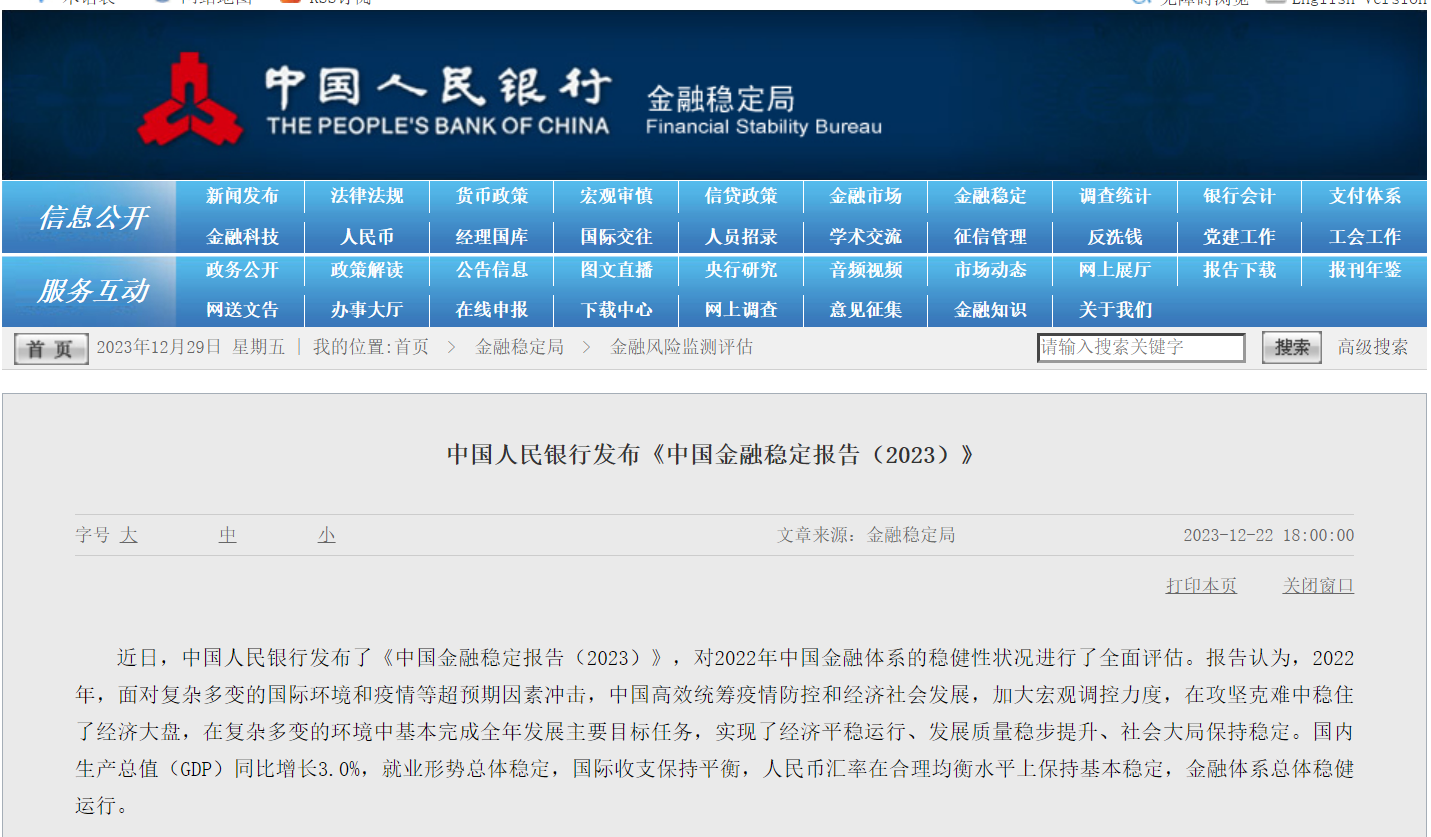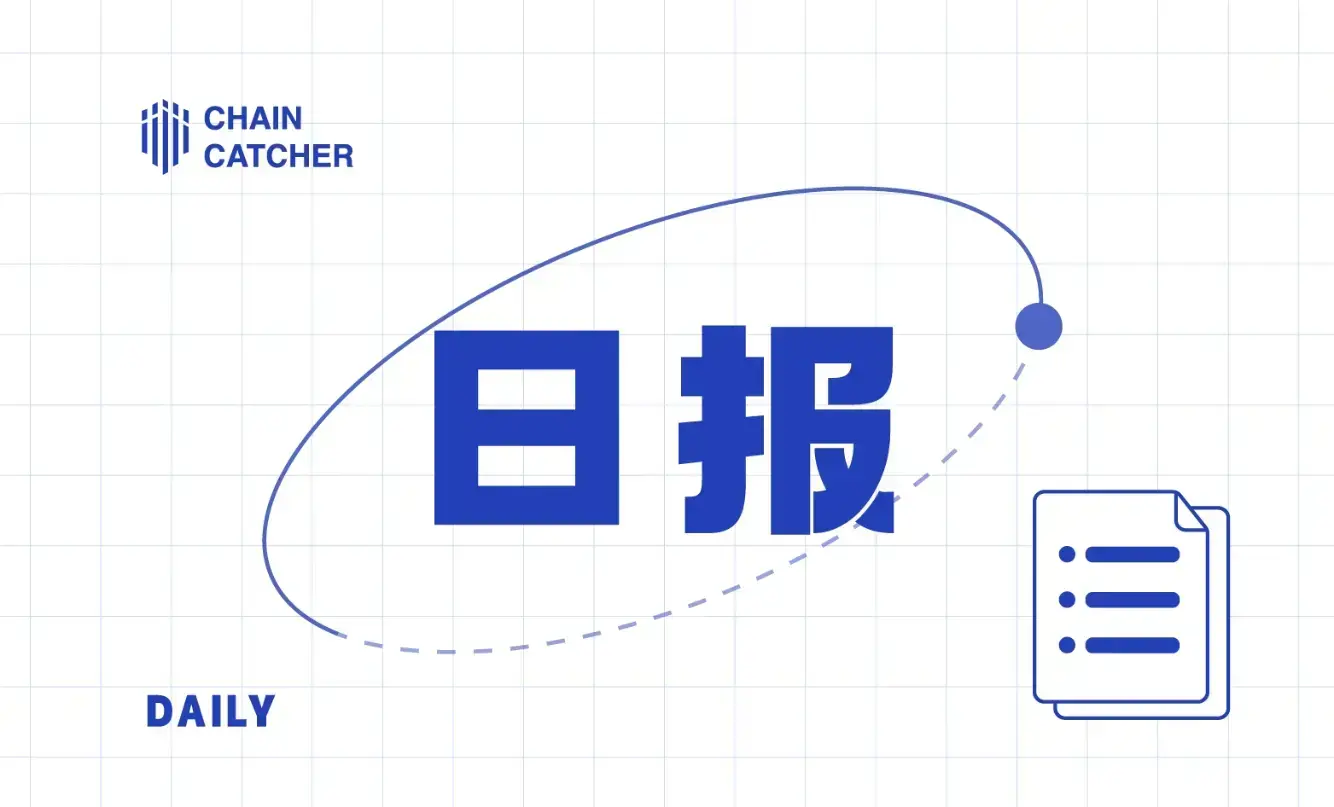Blockchain lawyers interpret the People's Bank of China "China Financial Stability Report (2023)"
Original author: Lawyer Liu Honglin, Founder and Director of Shanghai Mankun Law Firm
Recently, the People's Bank of China released the "China Financial Stability Report (2023)." The report mentions that in 2022, global geopolitical conflicts continued, inflation in some major economies remained high, the momentum for global economic and trade growth weakened, financial markets experienced ongoing turbulence, and external environmental uncertainties increased. In the sections on other industries and emerging risks, the report points out that crypto assets have dual risks of finance and digital technology. Crypto assets refer to digital assets developed and operated by the private sector that primarily rely on cryptography, distributed ledgers, or similar technologies, creating new asset forms and business models.

Regarding the issues related to crypto assets mentioned in the report, Lawyer Liu Honglin from Mankun Law Firm stated that the report emphasizes the financial risks and technological risks of crypto assets. Based on these risks, the central bank has highlighted the regulatory and preventive measures taken by the Chinese government in the crypto asset industry in recent years, indicating that the central bank maintains a relatively cautious attitude towards crypto assets.
01 Cryptocurrencies Do Not Have Legal Attributes of Currency
The report mentions that crypto assets are not issued by monetary authorities and do not possess attributes of currency such as legal tender and compulsion, and they are not subject to regulation that corresponds to their business substance, thus exhibiting dual risks of finance and digital technology. Lawyer Liu Honglin from Mankun Law Firm stated that because crypto assets are not issued by an official central authority, they lack a legal regulatory framework similar to that of traditional currencies. Due to the lack of regulation and intervention from monetary policy, issues such as price manipulation, fraud, and insufficient investor protection may arise. Furthermore, due to the immature market for crypto assets and the lack of sufficient security guarantees for the technologies used, their prices are highly volatile, and there may be risks of asset loss and theft.
Since crypto assets are based on decentralized blockchain technology, it leads to difficulties in tracing the flow of funds, which may result in their use for illegal purposes, such as money laundering and illegal trading. "Similarly, because crypto assets are not issued by a central authority, apart from some mainstream virtual currencies, virtual assets lack widespread recognition, limiting their ability to serve as an alternative currency," Liu Honglin said.
In addition, Liu Honglin believes that CBDC (Central Bank Digital Currency) differs from cryptocurrencies, as it is a digital form of legal tender issued by the national central bank, possessing legal status, and is subject to regulation, issuance, clearing, and other functions by the central bank. This is the biggest difference from decentralized crypto assets that do not have legal status. Based on its status as legal tender, it is regulated by the national central bank and generally maintains a relatively stable value, which is not the case for the vast majority of crypto assets. In terms of security, due to the centralized issuance of CBDC, the central bank's ability to ensure asset security is also stronger, making CBDC safer than cryptocurrencies.
02 Cryptocurrencies Pose Risks of Illegal Financial Activities
The report also mentions that the risks of traditional unregulated illegal financial activities are reflected in the crypto asset sector, such as asset price bubbles, high price volatility, liquidity and maturity mismatches, high leverage, and pro-cyclical risks.
Liu Honglin stated: Traditional unregulated illegal financial activities mainly include, for example, engaging in illegal public deposit-taking or disguised public deposit-taking without approval from relevant authorities, illegally raising funds from unspecified members of the public without legal approval, illegally issuing loans, handling settlements, bill discounting, fund borrowing, trust investments, financial leasing, financing guarantees, foreign exchange trading, and other illegal financial activities.
Currently, financial regulation in China mainly includes three aspects: management of market access for financial institutions; supervision and inspection of financial business activities; and handling problematic financial institutions and implementing policy measures to mitigate risks. Under the backdrop of strong financial regulation in China, a series of regulatory laws have emerged, such as the "People's Bank of China Law," "Commercial Bank Law," "Negotiable Instruments Law," "Guarantee Law," "Insurance Law," "Securities Law," "Trust Law," "Securities Investment Fund Law," and "Banking Supervision and Administration Law." Finally, the relevant illegal activities are subject to the final regulatory oversight of China's "Criminal Law."
On the other hand, the report mentions that new risks related to digital technology have emerged in this field, such as the lack of a "negative feedback" adjustment mechanism in automatically executed smart contracts, which can more easily lead to market "flash crashes"; security vulnerabilities in the data interaction process between on-chain and off-chain, making it susceptible to hacker attacks, leading to market manipulation and asset loss; the governance mechanisms of decentralized finance (DeFi) essentially have "centralized" characteristics, making them susceptible to control by a few insiders, harming the interests of other investors; and the anonymity of assets and difficulty in recovery lead to risks of money laundering and terrorist financing.
Liu Honglin believes that the difficulty in regulating crypto assets arises from their rapid growth in quantity and variety, as well as their anonymity and decentralized trading characteristics, making traditional financial regulatory methods difficult to apply in the crypto asset sector. Moreover, the rapid development of financial technology has created a significant "generation gap" with the lagging understanding of regulators. This regulatory "generation gap" is likely to result in a long-term misalignment between regulatory theories, policies, and the development of cryptocurrencies. Additionally, the emergence of privacy-enhanced cryptocurrencies, privacy wallets, and other products and services has reduced the transparency of crypto assets, making funds more opaque, which fosters financial fraud and manipulation in the crypto market, increasing the difficulty of financial regulation.
03 Geopolitical Factors Affect Financial Markets
The report points out that in 2022, global geopolitical conflicts continued, inflation in some major economies remained high, the momentum for global economic and trade growth weakened, financial markets experienced ongoing turbulence, and external environmental uncertainties increased. China has taken early action to clean up and regulate risks related to crypto assets. Currently, the scale of crypto assets accounts for a small proportion of global financial assets, with limited connections to the traditional financial system, but their rapid development, complex business models, opaque governance structures, and active cross-border business may threaten the stability of the global financial system. China has taken early action to clean up and regulate areas such as token issuance financing and crypto asset trading platforms, and in 2021 issued the "Notice on Further Preventing and Disposing of Risks Related to Virtual Currency Trading Speculation," forming a joint effort among multiple departments to prevent, mitigate, and address risks effectively.
Liu Honglin mentioned that the "China Financial Stability Report (2023)," as an annual report released by the People's Bank of China, aims to comprehensively assess the robustness of China's financial system. The report plays an important role in the industry, as assessing the stability of the financial system helps formulate policies, guide the use of structural monetary policy tools, accurately direct and increase support for key areas, and maintain the health and stability of the financial system.
Liu Honglin believes that the report emphasizes the financial risks and technological risks of crypto assets. Financial risks arise from the fact that crypto assets are not issued by monetary authorities, lack legal tender status, and are not subject to regulation that corresponds to their business, which will further amplify traditional financial risks in the crypto world. Technological risks mainly stem from risks of asset loss due to smart contracts, data interaction, and hacker attacks.
Based on these risks, the central bank has emphasized the regulatory and preventive measures taken by the Chinese government in the crypto asset industry in recent years, indicating that the central bank maintains a relatively cautious attitude towards crypto assets.
Special Statement:
This article is an original piece by Shanghai Mankun Law Firm and represents the personal views of the author. It does not constitute legal advice or consultation on specific matters. For reprinting, please contact Mankun Law Firm staff: MankunLawFirm










